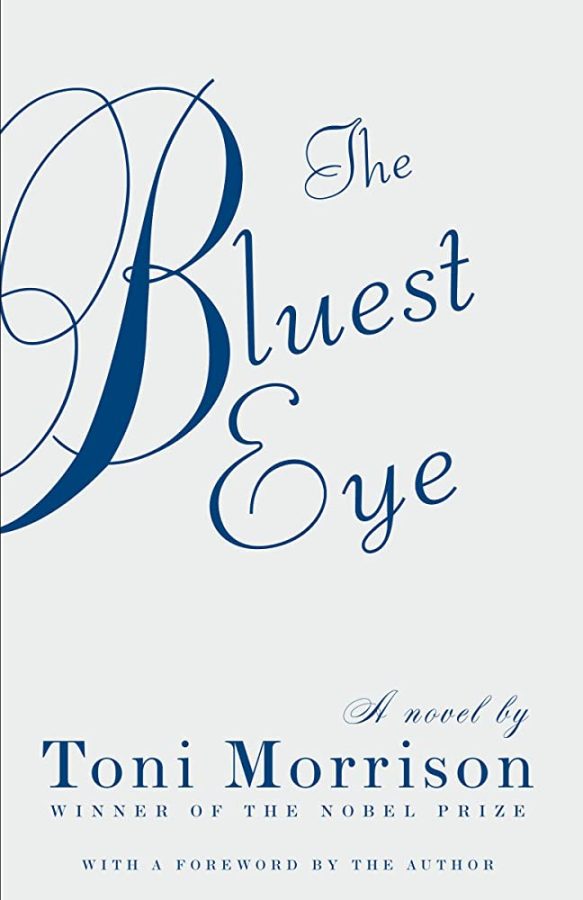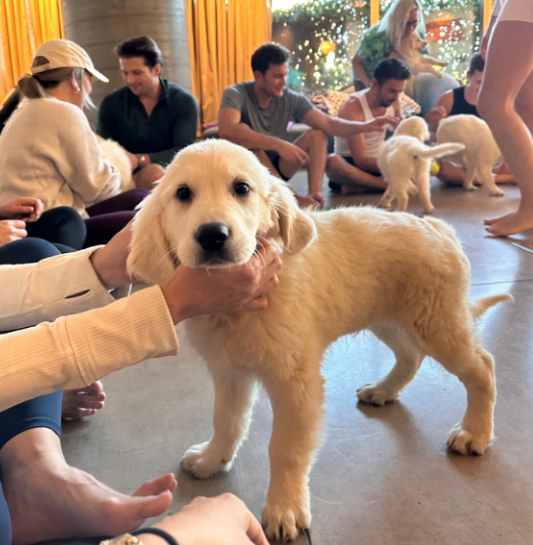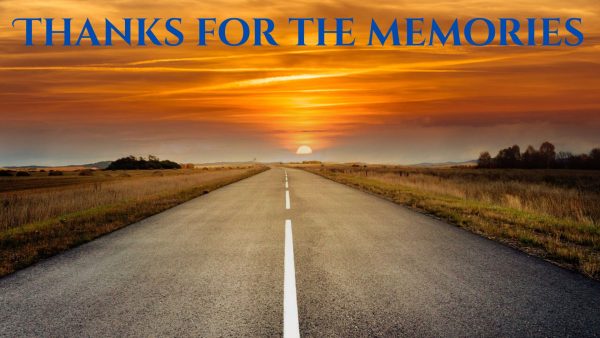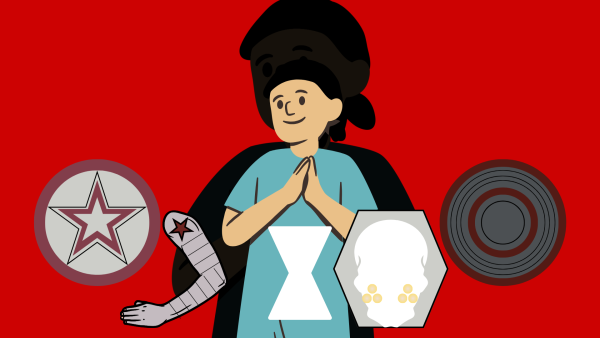‘The Bluest Eye’ deconstructs Afropessimism
Trigger warning: Rape, sexual abuse
Long, silky hair. A thin button nose. The bluest eye. These are some of the traits that our society views as the standard of beauty. We straighten and relax our hair, bleach our skin, shave our bodies from head to toe, and pay thousands of dollars for surgery in order to be considered “beautiful”, all at the expense of our natural features and sense of identity as Black men and women. Because beauty is in the eye of the colonizer.
Toni Morrison’s The Bluest Eye is narrated from two points of view. The narration switches perspective from Claudia MacTeer, who narrates through a mixture of a child’s and adult’s perspective, and an omniscient narrator. The story is centered around Pecola Breedlove, a young Black girl who prays every day for beauty. She is mocked by those around her for her dark skin, curly hair, and brown eyes. She yearns for blonde hair and blue eyes in order to fit in with those around her.
The novel begins with a foreward from the author regarding what prompted her to write about young Pecola. Morrison stated that the origin of the novel lay in a conversation she had with a childhood friend when they had just started middle school; she said she had wanted blue eyes. She spent years wondering “Who made her feel that it was better to be a freak than what she was?” and “Who had looked at her and found her so wanting, so small a weight on the beauty scale?” The Bluest Eye was her effort to say something about that; about why she could never possess what she desired, yet why she continued to pray for such an alteration. She focused on how the demonization of an entire race can manifest itself in the most “delicate” member of society: a child; and the most “vulnerable”: a female. The book’s central focus is on how African Americans could enter a state of “racial self-loathing” as a result of growing up in a society driven by the hatred of Blackness.
There was also an emphasis on language when writing this novel. Her goal was to express Black culture through language. Morrison wanted authentic African American voices in her novel, celebrating the rich dialect of the South.
When reading this novel, the reader must identify the relationship between society and the Black community. Who determines whether or not Whiteness is ideal, and how is this ideal perpetuated throughout? This novel specifies what that ideal looks like, how it is represented in media, and the ways in which Black people attempt to conform.
The ideal of Whiteness is most obviously demonstrated through the idolization of Shirley Temple and White baby dolls. The dolls have dimples, blonde curls, blue eyes, and White skin. This specific image of Whiteness permeates Pecola’s society, and the idolization of Shirley Temple within the novel emphasizes their obsession with White beauty. Before they can even read, young Black children are taught what skin color and facial features are considered “good”, “bad”, “ugly”, or “beautiful” through the media and production; White is right, and Black is flawed. Claudia actually asks the question, “what made people look at them [the dolls] and say, ‘Awwww,’ but not for me?”
This lesson is taught in the cinema as well; Pauline (Pecola’s mom) is first introduced to the movie theater during her adult years and quickly found that is now “never able, after her education in the movies, to look at a face and not assign it some category in the scale of absolute beauty”. Through its characters and stories, the cinema contributes to Pauline’s feelings of inadequacy. For example, actresses like Jean Harlow teach Pauline what is the “right” way to wear her hair, and interactions between the White men and women on the screen show her how she can be treated if she lives up to a certain standard of beauty (of course, that is one she could never achieve under her society). For both children and adults clearly, physical beauty in relation to Whiteness is directly linked to one’s mental wellbeing and quality of life.
Pauline and many other adults in the novel style their hair after White movie stars as stated, taming it using Nu Nile Hair Oil; Geraldine (a light skin Black woman in the story) has her son’s hair cut as closely to his head as possible so it doesn’t look like ‘Black hair”, and those with lighter skin, such as Maureen Peal and Soaphead Church, consider themselves above darker-skinned Black people and often discriminate against them.
But despite these efforts to conform, they regardless will remain “outdoors” from the White ideal. For Geraldine, her conformity to middle-class values does not prevent her from being sexually, emotionally, and physically unsatisfied. Maureen Peal, despite being lightskinned and wealthy, still isn’t fully accepted by the White community. Pecola’s desire for blue eyes does not result in society or her family treating her any better, but instead descends her to madness. No matter how hard they try, they will never be White nor will they be accepted by them.
In the novel, the Black community can be seen as “outdoors” by society as a whole. The idea of being outdoors is a physical representation of the Black community’s “outdoorsiness” from society. Claudia (the narrator) explains that being “put out” and being put “outdoors” are very different; “if you are put out, you go somewhere else; if you are put outdoors, there is no place to go.” To be “outdoors” is “an irrevocable, physical fact, defining and complementing our metaphysical condition”, a condition so serious that Claudia likens it to death. The analogy drawn between being put out and put outdoors was “like the difference between the concept of death and being, in fact, dead.”
The Black community struggles immensely because regardless of efforts to conform and receive acceptance—no matter what measures they take to embody Whiteness—they will still find themselves outdoors. There is an apparent ontological argument within this novel. Ontology is essentially the philosophical study of being or existence, especially in relation to others and the world. It defines what it means to be. Ontology arguments through the Afro-pessimist lens establish that Blackness is forever coterminous with slavery. Blackness is social death, a concept that explains that a slave is someone robbed of his or her personhood. The state of slavery is permanent; the Black body is a perpetual corpse that is at all times and in all spaces excluded from society as a result of slavery. Morrison’s novel is the embodiment of this theory.
Furthermore, the White ideal is responsible for objectifying the Black body. The protagonist has experienced many instances of physical objectification throughout her life, tormented by the violent gaze of both White and Black men. Throughout the novel, as seen through scenes of rape and incest, Black female characters are mainly considered as instruments to satisfy male desires and fantasies. Both White and Black men in the novel fail to recognize Black women as women but instead as objects of sexual pleasure.
And instead of creating a separate Black culture that protests White society, establishing a reality where Blackness is considered truly beautiful, the Black community within this novel instead only further perpetuates White values. The Black community has just accepted this judgment. It is as though there is a mental block that stops them from hating the very image of Whiteness that they’re told is ideal. Because they can’t hate their oppressors, they turn to hate themselves. The entire novel is full of Black characters who perpetuate the sterotypes society has created for them. Not only are Black people kept “outside” by Whites, but they are also often kept “outside” by their own internalized racism. In order to prevent self-hatred from taking over, many Black individuals find ways to place their anger onto members of their own community. Maureen Peal and the gang of boys insult Claudia, Frieda, and Pecola, calling them “black and ugly” despite the fact that they themselves are also black. The adults in the novel take their anger out on the children as well, passing down their feelings of inadequacy through generations; the cycle of the abused becoming the abuser is perpetuated.
And the novel progresses, it becomes clear that although society places Pecola outdoors, she builds the fence that keeps her there. Though there are many factors that contribute to her helplessness, like her abusive parents and the bullying she experiences at school, another thing that is often overlooked is contributing as well: her inability to fight back. She never questions her circumstances, believing she is deserving of the treatment she receives. It is this vulnerability that makes Pecola so attractive to her oppressors as a victim.
One of the most influential scenes takes place at a candy store. Through her interaction with the storekeeper, she awakens something in herself that allows her to finally see how White society truly views her. When the storekeeper looks at her, “somewhere between retina and object, between vision and view, his eyes draw back, hesitate, hover”. He “senses that he need not waste the effort of a glance”. It is here that for the first time, Pecola fully understands that White people do not even consider her human worthy of attention. This awareness results in her becoming engulfed in self-hatred, ultimately claiming her sanity. She lives in madness, a reality in which she “simply substitutes her inchoate reality with a better one: she has blue eyes which everyone admires and envies”.
The question of this novel is how do Black people cope with being placed outdoors? Because in this story Black people have two options: become consumed by anger and take it out on members of their own community; or take it out on themselves, driving their minds to madness. These two equally desolate realities leave many wondering if the fight to equality is a dead-end for Black people. Because according to Afro-pessimisists, Black people will remain “outside” regardless, forced to oblidge by White supremacy for as long as this nation exists. This novel is a recognition of Blackness in an inherently anti-Black world.
The bright side of this argument is the fact that within this reality, we can create new realities. Once we realize that we will forever be considered “other”, it then becomes a matter of how to cope and empower ourselves regardless of that vision. Black people must do all they can to create new worlds where they are considered beautiful, or else there will be no narrative of redemption. It’s up to us to believe in ourselves instead of trying to fit in in a reality that were never built to survive in. To be outdoors is to be dead. And as Claudia demonstrates, the only thing that makes being outdoors survivable is to be indoors somewhere; we must create the circumstances necessary.
“This soil is bad for certain kinds of flowers. Certain seeds it will not nurture, certain fruit it will not bear, and when the land kills of its own volition, we acquiesce and say the victim had no right to live.” In other words, the destruction of Black life is fundamental to the existence and survival of American society. The oppressive and destructive forces constitute the “soil” of our country. This version of reality presents a reality where Black death becomes commonplace, from which it becomes difficult to imagine the blossoming of a Black future. We need to be the bedrock beneath the soil, transforming and daring to claim value in spaces in which we were never meant to thrive.
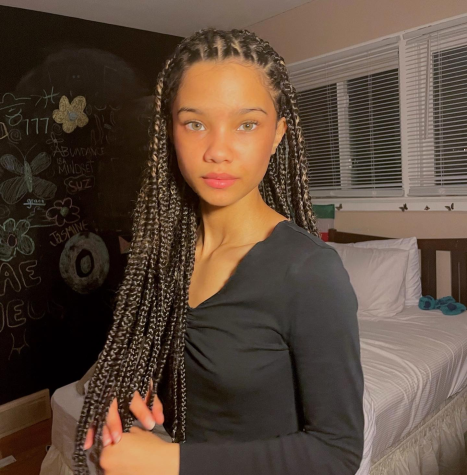
Jasmine Nichols is a Senior at Niles North who aims to write about contemporary issues within the black community. She enjoys learning about black history,...


